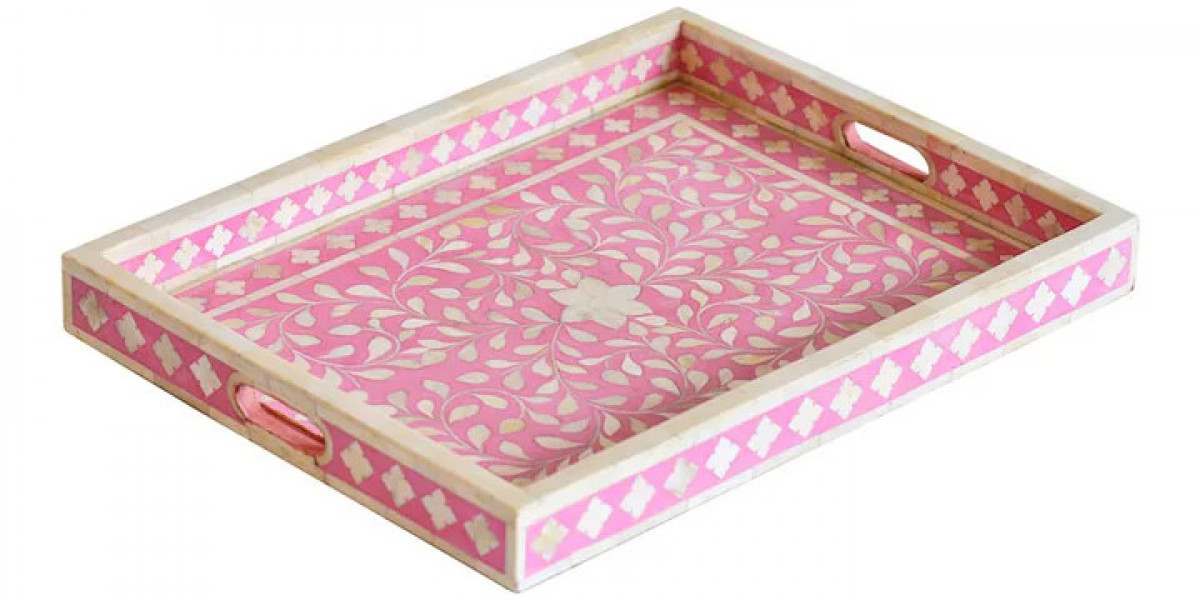Introduction
In the world of interior design, trends come and go, but some timeless crafts manage to weave their way back into modern homes with renewed charm and sophistication. One such heritage art is bone inlay—a centuries-old technique that is finding a stylish resurgence, particularly in the form of decorative trays. bone inlay trays with their intricate patterns and eye-catching detail, are now coveted not just as functional accessories, but as statement pieces that reflect a blend of craftsmanship, culture, and contemporary flair.
The Origins of Bone Inlay
Bone inlay, also known as intarsia, traces its roots back to the royal palaces of Rajasthan, India, during the 16th and 17th centuries. Originally used to adorn furniture for royalty, the technique involves embedding delicately carved pieces of bone into a wooden base to create ornate patterns and motifs. Traditionally, these designs included floral arrangements, geometric patterns, and even elaborate narrative scenes.
This meticulous process, requiring a high level of precision and skill, was passed down through generations of artisans. Each piece is handmade, with the bone carefully shaped and inlaid into resin or wood, then polished to perfection. The result is a stunning visual contrast—light bone against dark or colorful backgrounds—that exemplifies elegance and cultural heritage.
The Resurgence in Modern Décor
In recent years, there has been a significant shift toward artisanal and handmade home décor items. Consumers are increasingly looking for pieces that tell a story, support traditional crafts, and offer uniqueness—qualities that mass-produced items often lack. Bone inlay trays perfectly embody these values, making them a favorite among interior designers and style-conscious homeowners alike.
Their comeback can also be credited to the rise of global décor trends, such as bohemian, eclectic, and modern ethnic styles, which embrace handcrafted elements and bold design. Bone inlay trays effortlessly elevate coffee tables, consoles, and vanities, adding texture, depth, and a touch of exotic elegance.
Craftsmanship: A Labor of Love
Creating a bone inlay tray is a labor-intensive process that can take several days, depending on the complexity of the design. The process begins with ethically sourced materials, typically camel bone, which is cleaned, cut, and carved into precise shapes. These pieces are then arranged in intricate patterns on a wooden base. Once the inlay work is complete, a colored resin—often in hues like black, blue, green, or pink—is poured to fill in the gaps and set the design. The final step involves sanding and polishing to create a smooth, lustrous finish.
The human touch involved in every step of this process means no two trays are exactly alike. Each tray is a testament to the artisan’s skill, patience, and attention to detail.
A Versatile Accent Piece
What makes bone inlay trays particularly appealing is their versatility. They are as functional as they are beautiful. Use them to serve drinks and snacks when entertaining guests, or as a stylish organizer for perfumes, jewelry, or cosmetics on a dresser. They also make excellent coffee table centerpieces, effortlessly tying together a room’s aesthetic with a touch of old-world charm.
Available in a variety of shapes, sizes, and patterns, bone inlay trays can suit a wide range of décor styles—from minimalist and modern to traditional and opulent. Whether it’s a monochrome geometric design or a colorful floral motif, there’s a tray to match every taste.
Ethical Considerations
As with any craft involving animal-derived materials, ethical sourcing is crucial. Reputable artisans and retailers prioritize the use of recycled or responsibly sourced bone, often obtained from naturally deceased animals. It’s important for buyers to ensure they are purchasing from brands that are transparent about their sourcing and committed to sustainable practices.
In addition, supporting fair trade and artisan-led initiatives helps preserve the tradition of bone inlay while ensuring that craftspeople receive fair wages and safe working conditions. By choosing ethically made bone inlay products, consumers contribute to the survival of this age-old craft and the communities that sustain it.
The Future of Bone Inlay
The revival of bone inlay trays in modern interiors signals a broader appreciation for cultural heritage and sustainable luxury. As consumers move away from fast décor and toward investment pieces that carry meaning and artistry, bone inlay is poised to remain in the spotlight.
Moreover, innovations in design and material use—such as incorporating eco-friendly alternatives like resin-based faux bone—are expanding the possibilities for this craft while addressing ethical concerns. Designers are also experimenting with contemporary color palettes and abstract patterns, bringing a fresh twist to a traditional technique.
Conclusion
Bone inlay trays are more than just pretty accessories—they are functional art pieces steeped in history, culture, and human craftsmanship. Their recent resurgence is not only a tribute to their visual appeal but also to the values of slow living, ethical production, and timeless design. Whether you’re looking to add a touch of elegance to your home or searching for a unique gift, a bone inlay tray offers both beauty and heritage in one exquisite package.








